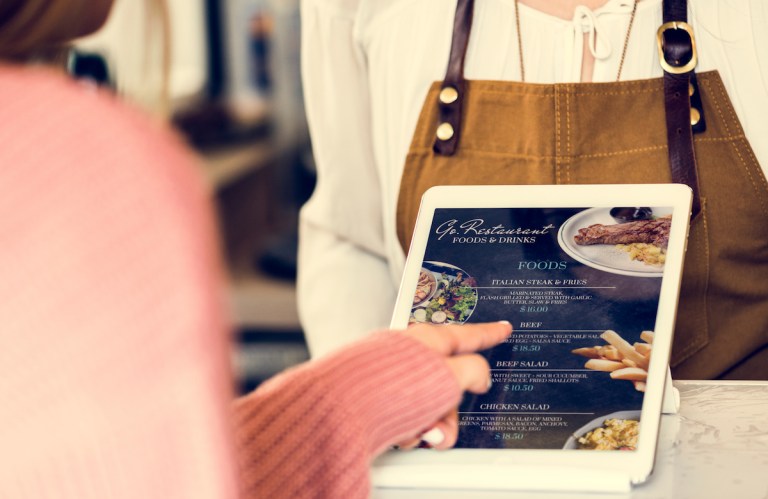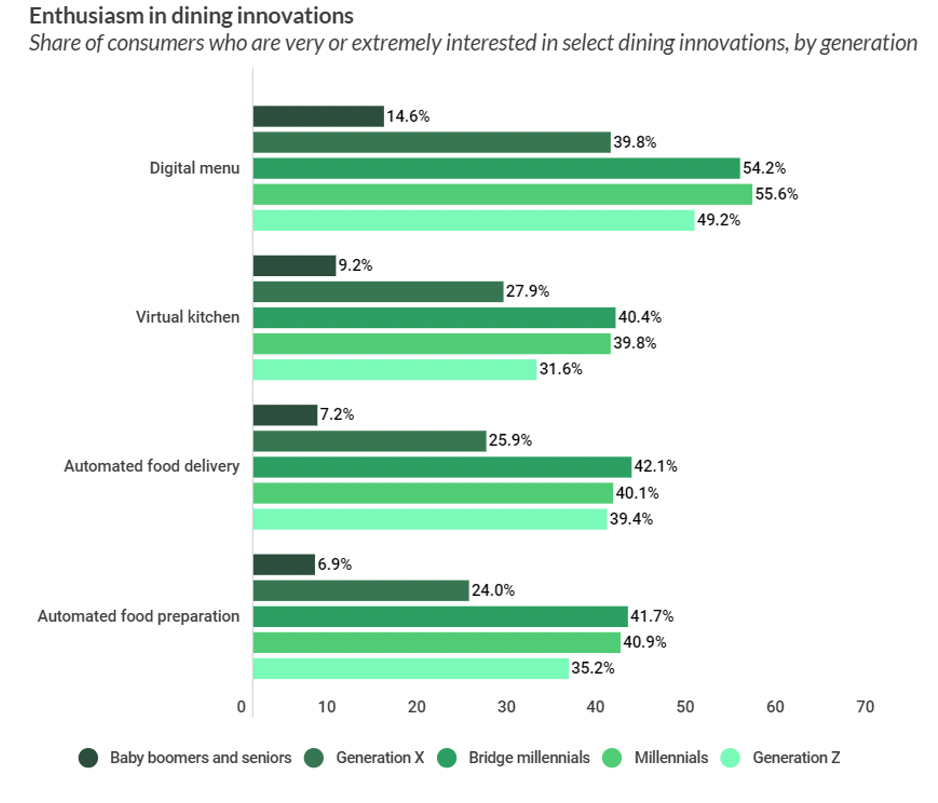
The generations are split when it comes to automation, virtual kitchens and other digital restaurant technology.
PYMNTS’ July “Connected Dining” report found millennials and bridge millennials are more enthusiastic than any other generation about each dining innovation we asked about, including both the normal (digital menus) and the futuristic (automated food preparation).
 Millennials and bridge millennials were most enthusiastic about digital menus, with a majority of each very or extremely interested. They are also anticipating automated food delivery, with 42% of bridge millennials and 40% of millennials very or extremely interested.
Millennials and bridge millennials were most enthusiastic about digital menus, with a majority of each very or extremely interested. They are also anticipating automated food delivery, with 42% of bridge millennials and 40% of millennials very or extremely interested.
Why these demographics in particular are leading the innovation charge when it comes to restaurant tech is hard to say, although PYMNTS researchers suspect that these consumers’ expectations of reduced costs (via less labor involvement and no need to tip automated components of the process), could be factors in their interest. These generations could also be interested in the increased speed and accuracy that automation implementation may provide, as 40% of millennials have side hustles and therefore may have less time to wait for their meals.
Some major chains have already begun the shift toward automation and virtual technology. Fast-casual chain Sweetgreen has automation integration plans for nearly all its restaurants within the next five years, according to comments CEO Jonathan Neman made at William Blair’s 43rd annual Growth Stock Conference. Sweetgreen’s first automated store trial indicated increased throughput and accuracy, more consistent portions, and decreased labor needs.
Neman said the tested tech has “the potential to structurally change Sweetgreen’s labor model,” as approximately half of the company’s variable labor is assigned to the assembly line.
“In five years, we do expect all Sweetgreen stores to be automated,” Neman said at the conference. “We think all stores at some point will make the switchover.”
Restaurants increasing their digital accessibility are seeing an average 11% increase in customer engagement year over year. As automation and similar innovations are expected to be increasingly adopted by quick-service and other restaurants, consumer demographics may continue to accept these integrations as they become more and more a part of daily life.